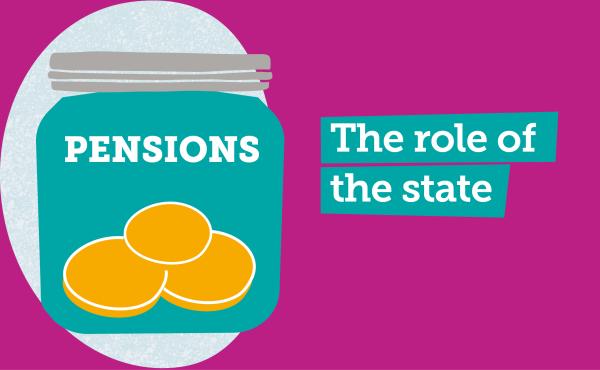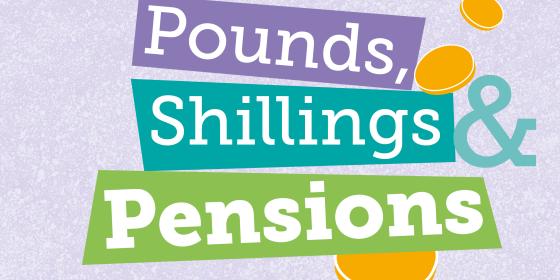
Despite many reforms aiming to improve their position, women remain at risk of lower pensions than men of the same age. In 2016, the gender pensions’ gap was 34%.
This blog will examine reasons for the gender gap in both private and State pensions.
Private pensions
Let’s first look at private pensions.
The policy of auto-enrolment has brought pensions to millions more workers. This may increase coverage, but it does not address the adequacy issue. Women are still at risk of lower pensions than men. In particular, anyone earning under £10,000 a year in each job is not auto-enrolled. This leaves out far more women than men. But women lose out in other ways too.
There are two types of private pension. Traditional final-salary-type schemes (called ‘Defined Benefit’) are guaranteed by employers who promise to pay a specific pension income in later life.
The future pension income depends on:
- The person’s earnings (as the promised pension is a specific proportion of salary)
- Number of years paying into the scheme
- The scheme’s terms and annual revaluation
- Whether the employer stays solvent
Why women are losing out on the Defined Benefit schemes
As women typically earn less than men and work for fewer years over their lifetime, they lose out on 1 and 2. Women often choose lower-paying careers and are more likely to take time out to have children or care for relatives. Therefore, women’s life course and life choices put them at risk of lower pensions. There is less difference in terms of 3 and 4.
The second type of pensions (called ‘Money Purchase’ or ‘Defined Contribution’ (DC)) do not promise a particular retirement income. Their future pension income depends on:
- Contributions paid in
- Investment returns earned on the fund over time
- Fees paid on the funds
- How money is withdrawn in later life
"So, private pensions which are earnings-related will generally be lower for women with lower lifetime income than men. But, even more worryingly, women often lose out relative to men in their State Pensions too."
Why women are losing out on the Defined Contribution scheme
The amount paid into the pension is generally the biggest determinant of future pension. Contributions usually relate to earnings - the more people earn, the more they can contribute. Women’s lifetime earnings will put them at risk of lower pensions. Women may also lose out if they are less financially savvy than men, and men are more likely to use a professional independent financial adviser who can help maximise their pension opportunities, both before and during retirement. Those who have professional advice often have better pension outcomes.
So, private pensions which are earnings-related will generally be lower for women with lower lifetime income than men. But, even more worryingly, women often lose out relative to men in their State Pensions too.
This is for a number of reasons, all of which I would hope can be rectified in future.
The unfairness of the State Pension on women
The old State Pension system (up to 2016) had an earnings-related component, so women with lower lifetime earnings would also have less State Pension than men. The new State Pension system (started in 2016) accrues a flat-rate amount, regardless of earnings, so in theory women in the future should not be so disadvantaged.
However, women retiring in the coming decades will still have entitlements from the old system, so are at risk of lower pensions. Official Government figures show the gender gap will remain until at least the 2030s.
There are also other causes of gender differentials in State Pensions.
Women are more likely to work part time, and part-time workers can often lose out on their State Pension record. Those earning below the National Insurance lower earnings threshold (£6,136 a year) receive no credit towards their State Pension. If they work part-time in several jobs, each paying, say, £6,000 a year, they receive no credit towards their State Pension. Government does not make any provision for them.
Women taking time out to have children or care for families are entitled to credit for State Pension. However, they have to claim these credits, which are only available for full years – part-years don’t count. Unfortunately, many women fall through cracks in the system. For example, women in households where someone earns over £50,000 will need to pay a tax charge when claiming Child Benefit, which means many women chose not to do so. However, by not claiming their Child Benefit, many women are losing out on their National Insurance credits for their State Pension! If a woman later realises they have lost out, they cannot backdate claims more than a few months and therefore cannot remedy it.
"Unfortunately, many women fall through cracks in the system."
Closing the gender gap
Ideas for closing the gender pensions’ gap have been suggested. The first step is to ensure women do not lose out on their State Pensions, and to close the loopholes. Women should be able to credit their State Pension for part-years and low earnings, covering all mothers at home with children, regardless of Child Benefit.
Remedying the private pension gap is more challenging, but suggestions include helping women retain pension membership during maternity leave or childcare, and encouraging employers or partners to contribute for them during breaks.. It is also important to consider removing the lower £10,000 earnings limit for auto-enrolled pensions, which excludes millions of lower-paid workers from workplace pensions.
There are no easy answers, but it is important to keep striving for gender pension equality.
Baroness Ros Altmann is an award winning expert of pensions and later life policies. Ros, the previous Pensions Minister, is also a member of the House of Lords where she is sits as Baroness Altmann of Tottenham.
Have you been affected by any of these issues?
If you have been affected by any of the issues described in this blog, or simply need someone to reach out to, you can call Independent Age’s freephone Helpline for information and advice on 0800 319 6789.
The views and opinions expressed in this article are those of the author and do not necessarily reflect the policy or position of Independent Age |

 Pensioner poverty rears its ugly head
Pensioner poverty rears its ugly head